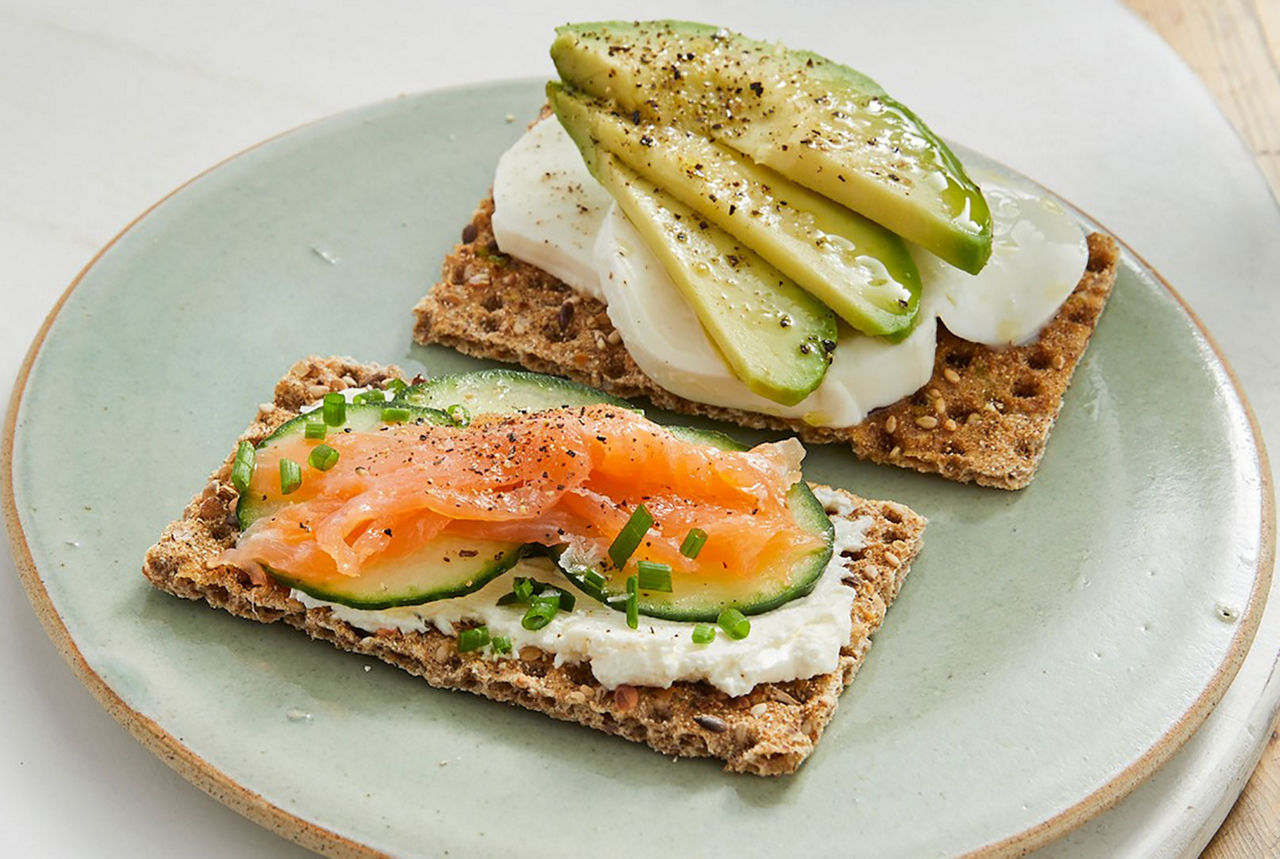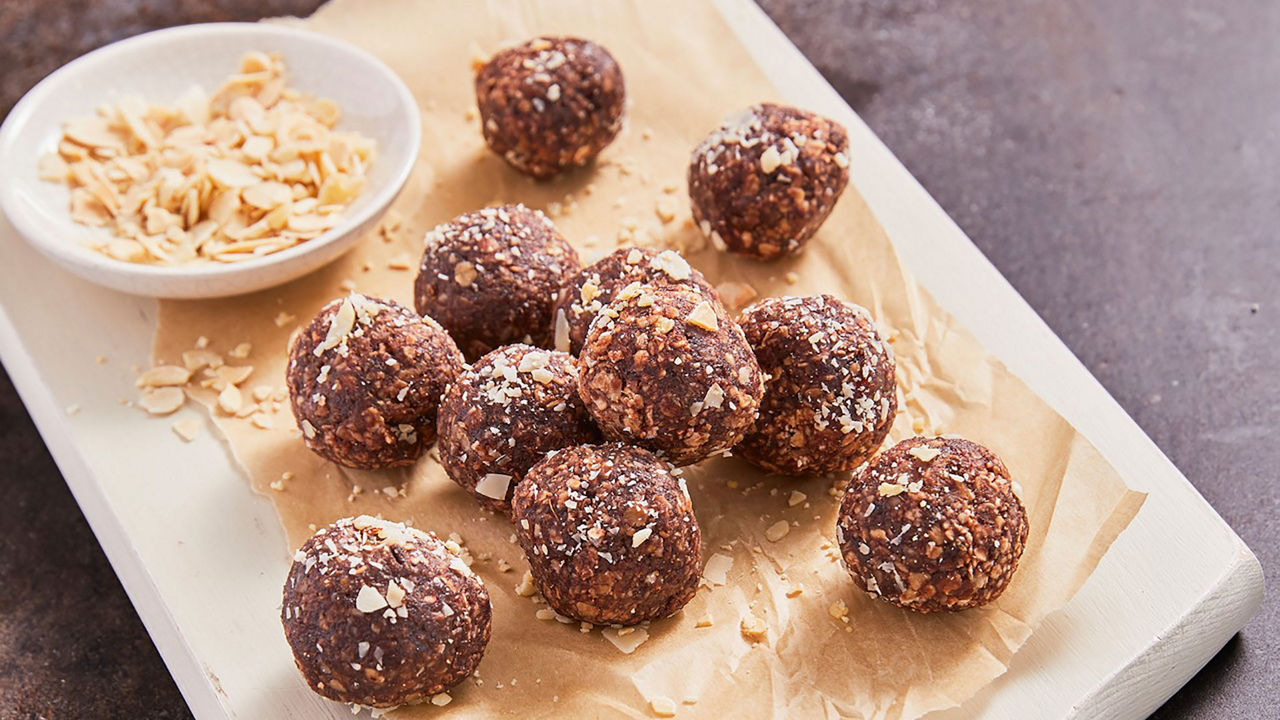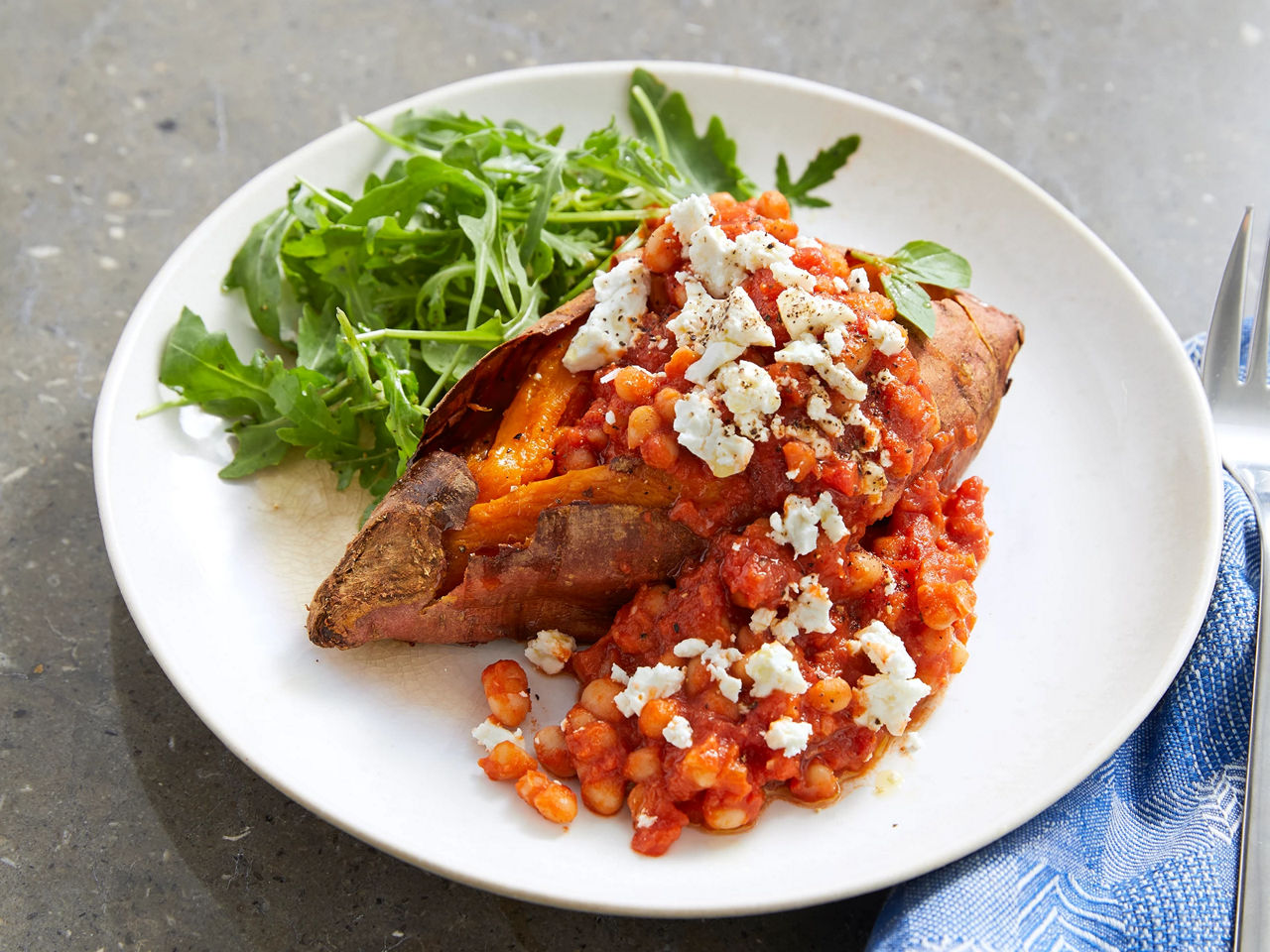Crispbreads make a great base for whatever you’re craving, but these topping ideas are especially quick, easy to prepare and packed with vitamins and minerals. They’re great for an office snack too.
Loaded savoury crispbreads

Content highlights
Type of meal
Lunch
Prep time
5 minutes
Serves
2
Allergens
gluten ◦ fish ◦ milk ◦ sesame
This dish is
low in sugar ◦ a source of fibre, vitamin D, B6, B12, phosphorus and manganese ◦ high in protein and chlorid
Ingredients
- Multi-grain crispbreads (e.g. Ryvita) with a choice of toppings to serve 2 people:
Smoked salmon & cream cheese topping
- 2 tsp low fat cream cheese
- ¼ cucumber, thinly sliced
- 50g smoked salmon
- 1tsp lemon juice
- Black pepper to taste
- ½ tsp chives, chopped
Avocado & mozzarella topping
- 60g mozzarella
- Half a ripe avocado
- A pinch of black pepper
- ½ tsp olive oil
Method
- Arrange four crispbreads on a plate.
- Spread two with cream cheese, before topping with cucumber and smoked salmon, followed by a squeeze of lemon, black pepper and chopped chives to finish.
- Spread the remaining two with mozzarella, then top with avocado cut into thin slices, sprinkle with pepper and drizzle with olive oil.
Nutritionist's tip
If your digestive system is sluggish as a result of pregnancy hormones, fibre can really help to keep things moving1.
Nutritional benefits
- Crispbreads provide fibre which can help prevent constipation caused by your hormonal changes3.
- Cream cheese provides calcium which is vital for making your baby’s bones and teeth4.
- Smoked salmon contains DHA which is important for fetal brain development5.
- Mozzarella provides calcium which is vital for making your baby’s bones and teeth4.
- Avocado contains vitamin E, an adequate intake of which during pregnancy is associated with a lower likelihood of your child developing asthma and respiratory issues later in life6,7.
| Nutrition value | Amount | % Reference nutrient intake |
|---|---|---|
| Energy | 291kcal | 15% |
| Fat | 16g | 23% |
| Saturates | 5.2g | 26% |
| Sugars | 3.7g | 4% |
| Salt | 1.2g | 20% |
Nutritional claims are based on single-portion analysis.
- NHS. Eat well: Fish and shellfish [Online] 2015 Available at:https://www.nhs.uk/live-well/eat-well/fish-and-shellfish-nutrition/ [Accessed August 2018].
- NHS. Foods to avoid in pregnancy [Online] 2017 Available at: https://www.nhs.uk/conditions/pregnancy-and-baby/foods-to-avoid-pregnant/#fish-and-shellfish.[Accessed June 2018].
- NHS. Your pregnancy and baby guide [Online] 2018 Available at: https://www.nhs.uk/conditions/pregnancy-and-baby/common-pregnancy-problems/#constipation [Accessed June 2018].
- NHS. Vitamins and minerals: Calcium [Online] 2018 Available at: https://www.nhs.uk/conditions/pregnancy-and-baby/vitamins-minerals-supplements-pregnant/#calcium-in-pregnancy [Accessed June 2018].
- National Center for Biotechnology Information. Omega-3 Fatty Acids and Pregnancy [Online] 2010 Available at: https://www.ncbi.nlm.nih.gov/pmc/articles/PMC3046737/pdf/RIOG003004_0163.pdf [Accessed July 2018].
- Turner SW et al. Associations between fetal size, maternal α-tocopherol and childhood asthma. Thorax 2010;65(5):391-7.
- Devereux G et al. Low maternal vitamin E intake during pregnancy is associated with asthma in 5-year-old children. Am J Resp Crit Care Med 2006;174(5):499-507.
Last reviewed: 28th July 2020
Reviewed by Nutricia’s Medical and Scientific Affairs Team



